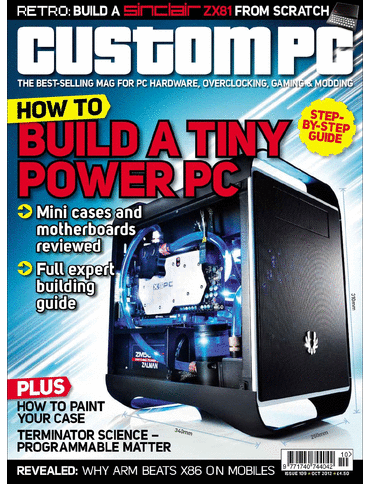
As a transition piece, the final Mobile Tech Watch column uses the interview format but looking at a mobile technology: specifically, Intel’s work on many-core processors for mobile devices. While the company’s efforts in exascale computing, with its Many Integrated Cores (MIC) architecture and Xeon Phi co-processor board, are well known, the effect the research is likely to have on future mobile devices is less so – hence my desire to shine a light on proceedings.
My subject for the interview was Jim Held, Intel Fellow and Labs Director for Microprocessor and Programming Research. Leading the team responsible for the Terascale Research Processor and Single-Chip Cloud Computer, both of which would feed directly into the development of the now-shipping Xeon Phi 50-core PCI Express board, Held certainly knows his stuff and was an absolute pleasure to talk to.
During the interview, Held touched on how his team’s research will lead to extremely efficient smartphone processors, with new power management features allowing applications greater control over processor states than ever before. The result, in theory, should be smartphones, tablets and laptops with significantly improved battery life – something that is already being implemented in Intel’s current-generation products.
“There’s a lag between when we begin doing research and when things appear in the marketplace,” Held told me. “You’re seeing the benefit – and you will in the Core line as well as the Atom line – the results of our research into how to improve the efficiency of the microarchitecture, and to improve the fine-grained management of the use of power on the die.”
What else does Held have in store for Intel’s future? Pick up the magazine and find out.
Custom PC Issue 113 is available in newsagents, supermarkets, delivered via subscription, and digitally through the Zinio service, so you’ve really no excuse not to read it.

 This month, my regular Mobile Tech Watch column takes a look at a name from the dim and distant past that is looking to take on ARM and Intel at their own game: MIPS Technologies.
This month, my regular Mobile Tech Watch column takes a look at a name from the dim and distant past that is looking to take on ARM and Intel at their own game: MIPS Technologies. This month’s Custom PC sees an interesting diversion from the norm in my Mobile Tech Watch column, as I talk to Andreas Olofsson of Adapteva about his company’s Epiphany architecture and the Parallella project.
This month’s Custom PC sees an interesting diversion from the norm in my Mobile Tech Watch column, as I talk to Andreas Olofsson of Adapteva about his company’s Epiphany architecture and the Parallella project.
 This month’s Custom PC magazine is a rather special issue: it’s the only place you’ll find a step-by-step photographic feature on how to build Sinclair Computer’s ZX81 kit outside a time-travelling newsagent with good stock of 1981-era magazines.
This month’s Custom PC magazine is a rather special issue: it’s the only place you’ll find a step-by-step photographic feature on how to build Sinclair Computer’s ZX81 kit outside a time-travelling newsagent with good stock of 1981-era magazines.


 In this month’s Mobile Tech Watch, my regular column in Dennis Publishing’s enthusiast-oriented Custom PC Magazine, I cover two major advances in the world of smartphone and tablet technology: STMicro’s creation of the first Secure Digital 3.0 voltage-level translator, and Chamtech’s spray-on antenna technology.
In this month’s Mobile Tech Watch, my regular column in Dennis Publishing’s enthusiast-oriented Custom PC Magazine, I cover two major advances in the world of smartphone and tablet technology: STMicro’s creation of the first Secure Digital 3.0 voltage-level translator, and Chamtech’s spray-on antenna technology.